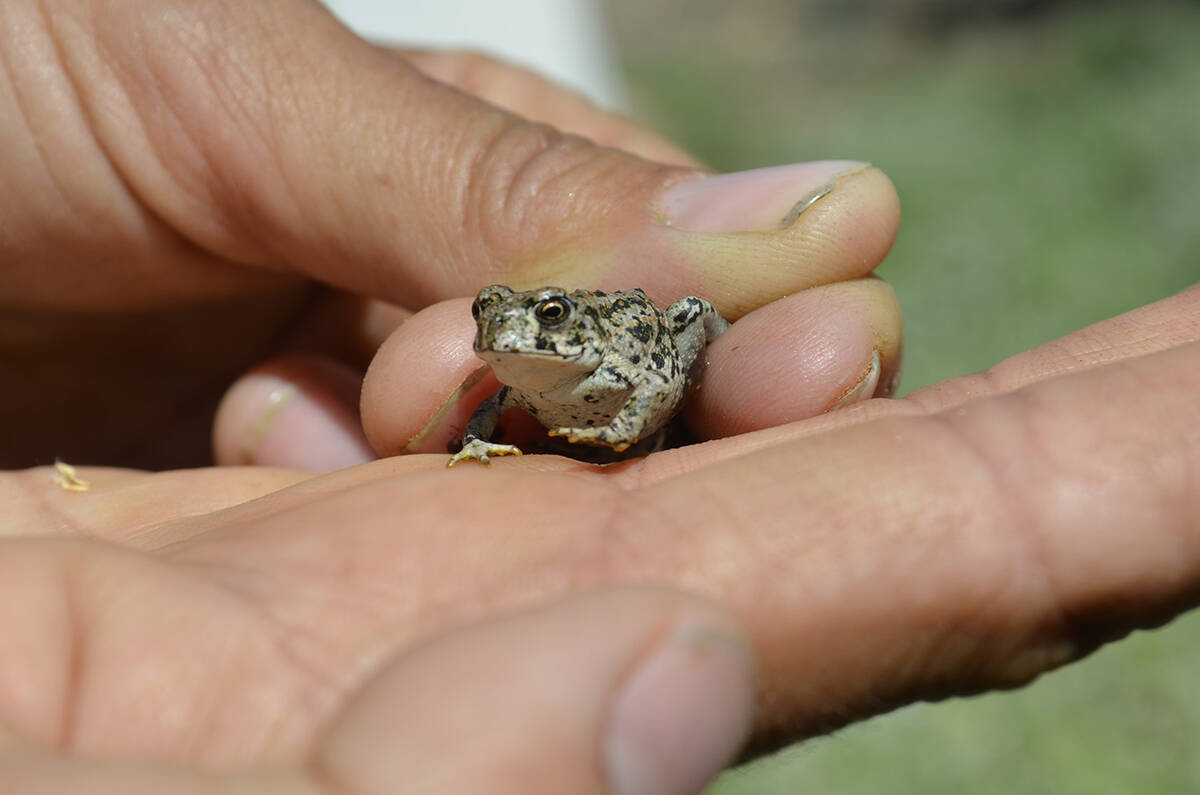Arizona
Arizona legislation aims to crack down on organized retail crime

PHOENIX – Arizona House Speaker Ben Toma hopes that HB 2435 will crack down on the increase in organized retail crime in Arizona.
At a news conference Tuesday at the Capitol, Toma, a Republican who is sponsoring the bill, emphasized “getting tough” and holding criminals accountable.
The legislation, which is headed to the House Judiciary Committee Wednesday, sets up harsher sentencing for repeat offenders. In the three sentencing tiers, prison terms would range from three months to 12.5 years in the lowest tier to 2.5 to 35 years in the highest tier.
Organized retail crime refers to individuals and groups stealing merchandise or engaging in fraud as part of a larger criminal enterprise, according to the Arizona Organized Retail Crime Association. The organization aims to share information among law enforcement and businesses.
A spike in the number of retail crimes has businesses and consumers concerned. According to the National Retail Federation, a number of retailers have been affected by organized retail crime and worry about the increase in violence that comes with the planned thefts. NRF’s National Retail Security Survey found the average shrink rate – a retail loss measurement – increased from 1.4% in 2021 to 1.6% in 2022.
Michelle Ahlmer, executive director for the Arizona Retailers Association, speaks in support of HB 2435 at a news conference at the Arizona Capitol on Jan. 30, 2024. (Photo by Mariah Temprendola/Cronkite News)
“We send the message that’s very clear, that in Arizona we’re not going to tolerate this. I would think that most of my colleagues are going to be open to this because, again, we’re not talking about one-off shoplifting here; we’re talking about organized retail theft,” Toma said.
Maricopa County Attorney Rachel Mitchell and Michelle Ahlmer, executive director for the Arizona Retailers Association, joined Toma at the news conference to tout the benefits of the bill.
The trio said business owners are becoming discouraged with the amount of theft they are experiencing. Ahlmer said having something as inexpensive as toothpaste in a lockbox is what some retailers have resorted to in order to prevent organized retail crime and allow customers to find the items they need. When things are stolen, consumers are less likely to find the things on their shopping list and may have to go to other retailers.
“A community without retail, is not a full community,” Ahlmer said, noting businesses want to make things accessible for customers.
Mitchell said retail cooperation is key to making the bill successful as the crimes grow in frequency and severity.
“One case we just recently prosecuted was sentenced on Friday, where the defendant took $36,000 worth of merchandise from several stores over the course of a few days,” Mitchell said.
Mitchell said a huge benefit of the bill is “more leeway in sentencing” for prosecutors.

Arizona
Arizona State puts its trust in new AD Graham Rossini in uncertain time for college sports

TEMPE, Ariz. – Per The Athletic’s research, 25 percent of power-conference athletic directors received undergraduate degrees from the institution they represent. This includes BYU’s Tom Holmoe, Indiana’s Scott Dolson and Vanderbilt’s Candice Storey Lee.
Arizona State’s Graham Rossini joined this group last week, but his association with the Sun Devils goes far beyond his college days. Rossini, 44, says he’s thought about Arizona State every day since he was 11 years old. An exaggeration, perhaps, but not far off the mark.
Growing up on the Gulf Coast in Mobile, Ala., Rossini learned about Arizona State while collecting baseball cards. An Atlanta Braves fan, he came across the card of first-round draft pick Mike Kelly. On the back of Kelly’s card, Rossini read that Kelly had starred at Arizona State, winning the Golden Spikes Award, given annually to college baseball’s top player.
A seed took root.
From 1,736 miles away, Rossini started following the Sun Devils. He watched Paul Lo Duca and Antone Williamson in the 1993 College World Series. He watched Jake Plummer and Pat Tillman in the 1997 Rose Bowl. One day a high school English teacher asked students to write letters to universities requesting info for admission. Rossini’s first letter went to Arizona State. The school sent back a poster of Sparky, its maroon-and-gold mascot. Rossini hung it on his bedroom wall.
Rossini’s father worked at Chevron. His mother first worked in software and later became a teacher. Rossini was a baseball player. He wanted to play at Arizona State but then-coach Pat Murphy didn’t offer a scholarship. Rossini flew out to the desert and tried to walk on, but at 6-foot-5, he was awkward for his position. “The tallest, skinniest catcher of all time,” recalled former Arizona State catcher Tuffy Gosewisch.
Murphy, today the manager of the Milwaukee Brewers, was honest with Rossini. “You’re good enough to make the team,” he told him, “but you may never play.” He asked if Rossini might want to work as a student assistant instead.
This is where former Arizona State players say Rossini differs from other ADs. “It’s a special kind of story for me because he’s literally washed laundry for that program,” said Dennis Wyrick, who played for Arizona State from 2000 to 2003. Asked about this last week, Rossini recalled a trip to USC, driving around Compton looking for a place to wash uniforms. “And it was like, ‘Hey, whatever it takes,’” he said.
Murphy eventually made Rossini the program’s director of operations, or as Gosewisch put it, “he was like a front office by himself.” Today, friends and former co-workers describe Rossini as approachable, humble, trustworthy, passionate, genuine, thoughtful and intentional but the word that gets repeated is “detailed.”
“He literally had his hands on everything from recruiting to scheduling, to what the uniforms look like, to anything,” Murphy said before the Brewers left for a recent trip to Houston to play the Astros. “Anyone who was part of the program at this time, call one of those players. They all knew Graham had it under control.”
Indeed, when Rossini left Arizona State to take a position with the Arizona Diamondbacks in 2008, Brendan Cunningham, a former student manager and ops director, said it felt like the head coach had left. The void was that big. Everyone was like, “What are we going to do without Graham?” he said.
Per The Athletic’s research, 40 percent of power-conference athletic directors were first-time ADs when they were hired. This includes Syracuse’s John Wildhack, who spent the bulk of his career at ESPN, and Colorado’s Rick George, who worked in Major League Baseball and with the PGA Tour.
Rossini joined this group of first-timers last week, and it sparked local criticism, even though for the last three years he had held senior positions and participated in major Arizona State projects, such as securing naming rights for Mountain America Stadium.
This is an interesting time for Arizona State. With the Sun Devils slow to embrace NIL and the football program handcuffed because of an NCAA investigation, many fans turned on previous AD Ray Anderson, who resigned under pressure in November. Despite Rossini’s background and experience, fans favored an outside candidate, one who had worked as an AD, to lead the university’s transition into the Big 12, where it will compete this fall.
During Rossini’s introductory news conference, school president Michael Crow said the school considered everyone imaginable for the position but throughout a six-month process promoting Rossini emerged as the best choice. Asked how many others he had formally interviewed, Crow replied: “Zero.”
Friends and colleagues of Rossini did not understand the initial negative reaction. One said anyone who disagreed with the AD choice simply did not know Rossini. Another called it a byproduct of Rossini himself, an executive who’s always worked in the shadows, more concerned about performance than publicity. (Indeed, a Google search of Rossini does not produce much beyond his work bios.)
New Beginnings 🔱#ForksUp /// #TogetherWeWin pic.twitter.com/oJahwWXYgq
— Arizona State Sun Devils (@TheSunDevils) May 24, 2024
Diamondbacks president and CEO Derrick Hall, an Arizona State product himself, got to know Rossini during Rossini’s time with Arizona State baseball. When the Sun Devils traveled to Los Angeles, Rossini and Hall, then with the Dodgers, always hooked up and Rossini would bring the team to Dodger Stadium. Once Hall moved to the Diamondbacks in 2005, he created a position for Rossini that dealt with customer experience.
Hall said it didn’t take long for Rossini to show he was capable of more. One big assignment led to another. Over 13 years, Rossini became Hall’s “go-to guy,” a vice president who handled some of the organization’s biggest projects. Rossini played major roles in bringing the 2011 All-Star Game and 2013 World Baseball Classic to Phoenix. He also became Hall’s project manager in the construction of Salt River Fields, the organization’s spring-training complex.
“He … does … not … miss … a .. detail,” Hall said, emphasizing each word.
In 2020, when the pandemic placed the world on hold, Rossini talked with Jim Phillips, commissioner of the Atlantic Coast Conference. The two had met when Rossini was a student manager with the baseball team and Phillips was finishing up his master’s degree at Arizona State. They had since stayed in touch, Phillips serving as a mentor. During their conversation, Rossini asked Phillips about the state of college athletics.
Phillips told Rossini not to dismiss it. There was something special about working with college athletes, he told Rossini. And the environment was perfect for raising a family. If your children are into sports, they have access to it. If they’re into arts and culture, they have access. Whatever it is, it’s there, Phillips said.
The talk stuck with Rossini, who returned to Arizona State as a senior administrator.
“It’s amazing how things kind of work themselves out,” Phillips said this week, noting how Rossini always struck him as an “old soul,” someone who listened and tried to learn. “Graham found himself exactly where he should be.”
Per The Athletic’s research, 43 percent of power-conference schools have changed athletic directors over the last three years. Some of this stems from ADs leaving for better opportunities, but it also reflects the need for institutions to find leaders who can navigate a changing landscape.
In addition to NIL and the transfer portal, the NCAA recently agreed to allow schools for the first time to pay athletes directly through revenue sharing. Although the deal is not final, it could be in place as soon as next year. The old collegiate model is dead. The next is still taking shape.
Crow said Arizona State worked six months to create a financial structure in athletics that can “weather any hurricane going forward, any tumult that we might encounter.” This, the president said, will allow Rossini and his staff to focus on ticket sales, NIL fund-raising, corporate sponsorships and winning.
Arizona State for years has been known as a “sleeping giant,” a label folks here have heard so much it makes their eyes roll. The alignment between administration and athletics has often been off, leaving fans wanting more, particularly from the school’s anchor programs. As athletic director, Rossini’s biggest task will be to mend relationships and convince fans and donors that Arizona State will not be left behind.
When Rossini left the Diamondbacks, Hall told him he hoped one day Rossini would become Arizona State’s athletic director. Rossini downplayed the idea, telling Hall that he simply intended to focus on his responsibilities. On a recent drive to Scottsdale for the Pac-12 baseball tournament, Rossini said becoming Arizona State’s AD may have been in the back of his mind, but it was never a driving force. It was more about purpose, less about title.
Friends, however, insist they saw this coming. Harvey Jabara, a longtime Arizona State supporter who owns a minority stake in the San Diego Padres, said he would have loved for Rossini to come to San Diego, but in the back of his mind he always knew Rossini’s heart was with the Sun Devils.
“This is the dream job for him,” Jabara said. “I think that’s unique in this day and age where so many people approach — not just in athletics, but in all parts of society — it’s always the next job that they’re pursuing. That’s not happening here as I know Graham Rossini.”
Said Murphy, strongly: “He will never leave ASU for another college job — that’s a guarantee.”
Throughout his career, Rossini has joked that he is a “professional problem solver,” someone who has done his best work when stakes are highest. That’s the environment he steps into at Arizona State, whose reality has seldom matched external hopes. He welcomes this challenge.
“There’s change around all of us,” Rossini said. “We’re prepared to be relevant in the areas that we need to today but also agile enough to react to the changes that happen around us. It’s a cliche — I don’t like using it — but I don’t see it as changes or challenges, just new opportunities.”
GO DEEPER
College football confidential: How NIL is used to keep players out of the transfer portal
(Photo of Graham Rossini at his introductory press conference as Arizona State’s athletic director: Michelle Gardner / The Republic / USA Today Network)
Arizona
Simmons Fire burns 300 acres near Kearny, prompts evacuations

Bear Fire burns in Benson, Ariz., in Dragoon Mountain Ranch Estates
The Bear Fire burning east of Benson, Ariz., within Dragoon Mountain Ranch Estates on May 28, 2024, was estimated at 50-75 acres.
The Simmons fire that started on Tuesday burned at least 300 acres north of Kearny and prompted immediate evacuations.
At around 6:20 p.m., the fire was reported about 10 miles north of Kearny on the eastside of the Gila River, according to the Arizona Department of Forestry and Fire Management.
By around 8 p.m., the state forester said the fire was progressing southeast due to high winds.
Pinal County Sheriff’s Office evacuated residents in the Riverside neighborhood outside of Kearny, designating the Ray Elementary School as an emergency meeting place for displaced residents.
The Arizona Department of Transportation closed State Route 177 that runs through Kearny with no estimated time to reopen.
Arizona
‘Consummate professional’ Tommy Splaine shines for Arizona baseball in big moments

Among players who have appeared in at least 25 games this season, Tommy Splaine’s .237 batting average is at the bottom of the list for Arizona. It’s also by far the lowest of his three years at Arizona, having hit .271 as a freshman and .287 last season.
But where the junior first baseman lacks in raw numbers he more than makes up for in big plays.
It was Splaine’s single in the bottom of the 9th inning that scored Emilio Corona to give Arizona the Pac-12 Tournament title over USC on Thursday night, part of a 2-hit game that also featured a single to open the 8th when the Wildcats scored twice to tie it.
Splaine had five hits in the four Pac-12 Tournament games, tied for second most on the team. And his previous late-game dramatics were key to Arizona winning the conference’s regular season title and pulling off several of its astounding eight walkoff wins.
“It’s funny because Tommy can have some at-bats where there are strikeouts and he’s not doing much,” UA coach Chip Hale said afterward. “But it seems like when the the game’s on the line he has his best at-bats.”
That statement describes Splaine’s season—and that game—to a T. He was 2 for 4 against USC, striking out the first two times as the Wildcats were being no-hit, yet during the late innings he came through.
Splaine has struck out 56 times this season, three more than in his previous two years, while walking just seven times. His swing has been in constant adjustment, starting from the fall when hitting coach Toby DeMello started working with him to try and draw more power from his 6-foot-5 frame.
“Starting in the fall, I started working with some different stuff,” Splaine said. “As the season has gone on obviously, it didn’t go as I wanted it to but my coaches and I have been just working hard just to keep improving and just sticking with it really.”
Overall, the season has been a disappointment for Splaine, who after spending 2023 sharing catcher duties with Cameron LaLiberte was moved to 1B. He’s been stellar there, with a .988 fielding percentage and just five errors in over 400 chances, but because of the hitting struggles he hasn’t started every game; true freshman Andrew Cain got some starts at 1st with Splaine coming in late as a defensive replacement, but there hasn’t been any complaining from the vet.
“If he was a professional I’d say he’s a consummate professional because he has not let any of his struggles at the plate affect him on defense,” Hale said. “That’s why he’s out there. He holds down that infield, and I’m just so happy that it was him that got the winning hit.”
Splaine’s five home runs are a career high, but he last hit one out April 24 at New Mexico State. Since then he’s had nine hits, all singles, but he’s found other ways to contribute down the stretch as he’s been part of the last three walkoffs.
Against Washington State he led off the 11th inning by getting hit by a pitch and ended up scoring the winning run in that 7-6 victory, part of a run of a school-record 11 consecutive Pac-12 victories. Then, in the regular-season finale Splaine was first to the plate in the 9th after Oregon State took a 3-2 lead in the top of the inning.
What did he do? Like he has more than anyone else on the Wildcats (12), Splaine was hit by a pitch. That’s happened 29 times in his career, 10th-most in school history.
A one-out walk to Maddox Mihalakis put Splaine in scoring position, and he crossed the plate as the tying run just ahead of Mihalakis on Brendan Summerhill’s walkoff 2-run double to win the conference title.
“I just really wanted to pull through for this team,” Splaine said. “We all love each other.”
-

 Movie Reviews1 week ago
Movie Reviews1 week ago‘The Substance’ Review: An Excellent Demi Moore Helps Sustain Coralie Fargeat’s Stylish but Redundant Body Horror
-

 Culture1 week ago
Culture1 week agoFrom Dairy Daddies to Trash Pandas: How branding creates fans for lower-league baseball teams
-

 World1 week ago
World1 week agoPanic in Bishkek: Why were Pakistani students attacked in Kyrgyzstan?
-

 News1 week ago
News1 week agoRed Lobster files for bankruptcy after missteps including all-you-can-eat shrimp
-

 Politics1 week ago
Politics1 week agoMichael Cohen swore he had nothing derogatory on Trump, his ex-lawyer says – another lie – as testimony ends
-

 News1 week ago
News1 week agoThe states where abortion is on the ballot in November : Consider This from NPR
-

 News1 week ago
News1 week agoCity of Kyle falls short of ‘Kyle’ world record
-

 Politics1 week ago
Politics1 week agoAnti-Israel agitators interrupt Blinken Senate testimony, hauled out by Capitol police



















